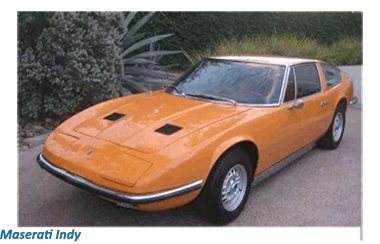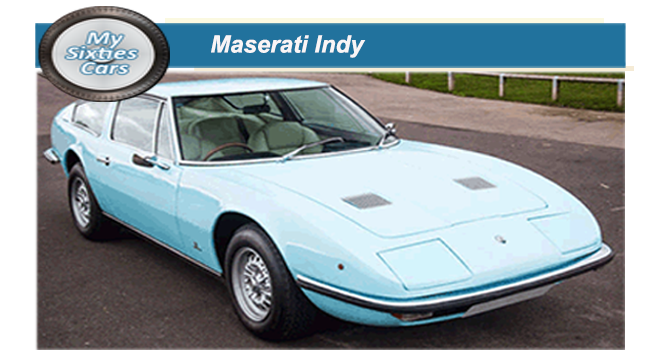
The Maserati Indy was released as the Sixties were drawing to close, as a spacious 2+2 with monocoque body designed, once again, by Vignale.
Carrozzeria Vignale designs for the Maserati Indy chassis was based around the Quattroporte saloon’s chassis, although the car was both shorter and broader. Despite it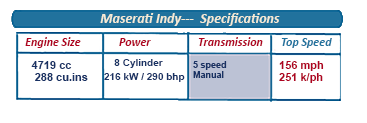 s size, Vignale succeeded in styling the Indy so that it remained the sleek touring car lines that Maserati had become well known for in the Sixties, while still sitting four in comfort and even proving some reasonable luggage space.
The Indy shape gave an excellent aerodynamic performance, and the Indy had an impressive top speed for the era.
With an ey
s size, Vignale succeeded in styling the Indy so that it remained the sleek touring car lines that Maserati had become well known for in the Sixties, while still sitting four in comfort and even proving some reasonable luggage space.
The Indy shape gave an excellent aerodynamic performance, and the Indy had an impressive top speed for the era.
With an ey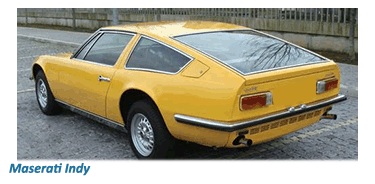 e firmly fixed on the United States, with the model was sometimes marketed as the Maserati Indy America, the Indy featured a typically luxurious Maserati interior a small pair of rear seats, and a three-spoke Nard steering wheel, leather reclining seats and electrically operated windows.
To add to its “high tech” image, the Indy’s headlights were of the “pop-up “variety.
As if to illustrate that this technology was new and not necessarily to be trusted, Maserati's design team also ensured that a mechanical backup would also be in place.
e firmly fixed on the United States, with the model was sometimes marketed as the Maserati Indy America, the Indy featured a typically luxurious Maserati interior a small pair of rear seats, and a three-spoke Nard steering wheel, leather reclining seats and electrically operated windows.
To add to its “high tech” image, the Indy’s headlights were of the “pop-up “variety.
As if to illustrate that this technology was new and not necessarily to be trusted, Maserati's design team also ensured that a mechanical backup would also be in place.
![]()
Later versions of the Indy also came equipped with power-assisted steering and air-conditioning, while the later version boasted a newly designed hydraulic brake system from Citroen.
From 1970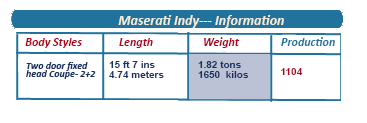 to 1972, Maserati offered the option of a 290-bhp (213-kW) 286-cubic-inch (4,700-cc) engine with Bosch electronic ignition in addition to the original 254-cubic-inch (4,263-cc) engine.
to 1972, Maserati offered the option of a 290-bhp (213-kW) 286-cubic-inch (4,700-cc) engine with Bosch electronic ignition in addition to the original 254-cubic-inch (4,263-cc) engine.
 Initial Indy versions came with a 256-cubic-inch (4,200-cc) V8, which had two valves per cylinder and twin overhead chain-driven camshafts per cylinder bank.
In 1971, Maserati replaced both engines with a 4,900-cc, 299-cubic-inch V8 that also powered the Ghibli SS and gave 320 bhp (235 kW) when installing in the Indy.
The top speed of this particular variant was 165 mph (265 kph), an impressive figure even when judged by today's standards.
Initial Indy versions came with a 256-cubic-inch (4,200-cc) V8, which had two valves per cylinder and twin overhead chain-driven camshafts per cylinder bank.
In 1971, Maserati replaced both engines with a 4,900-cc, 299-cubic-inch V8 that also powered the Ghibli SS and gave 320 bhp (235 kW) when installing in the Indy.
The top speed of this particular variant was 165 mph (265 kph), an impressive figure even when judged by today's standards.
![]()
